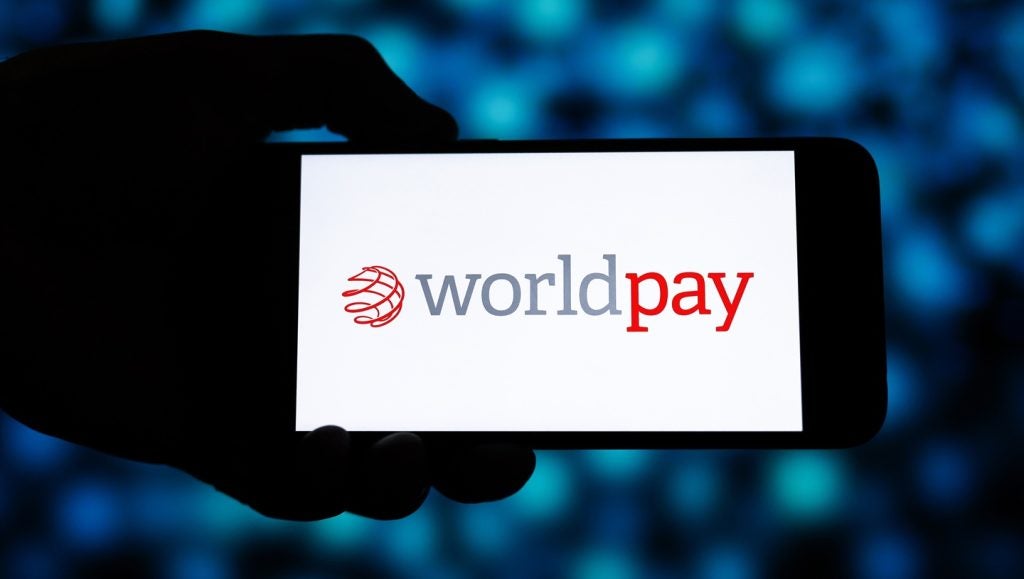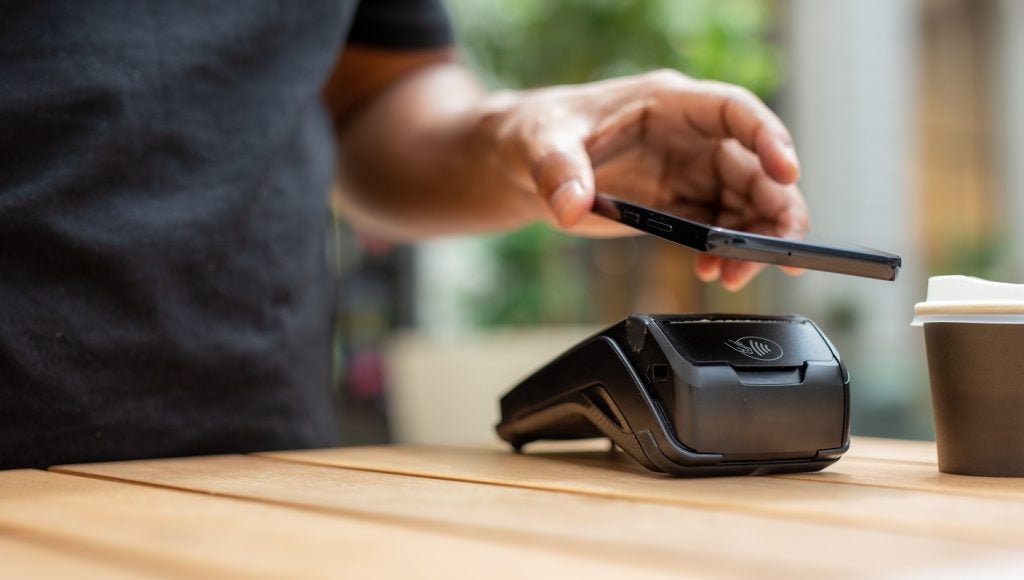Growth in the pre-paid market in the Middle East, notably the Gulf Cooperation Council (GCC) countries, has been strong in recent years, writes Alison Ebbage. Government initiatives to drive financial inclusion via electronic payments and to improve on transparency in the remittances market are the big story
The prospects for exciting growth in prepaid in the Middle East remain encouraging, boosted by government initiatives as well as on the consumer side, an increase in e-commerce and the use of prepaids for currency by the large youth population.
Sumit Tyagi, business leader, prepaid Products, Middle East and North Africa at Visa comments: "There are many factors that are driving growth in the Middle East. It has been a strong growth market for the last few years."
Tyagi says that the growth is so far pretty concentrated around the UAE, Kuwait and Saudi Arabia. "The United Arab Emirates (UAE), the Kingdom of Saudi Arabia (KSA) both have attractive demographics, high standards of living, a sizeable expatriate population and a large unbanked migrant population.
As a result of better knowledge and acceptance there we expect that other countries in both the Middle East and North Africa will follow. This presents huge opportunities for prepaid solutions in the socio-economic spectrum across the region," he says.
The figures back this up. Of the 190 million population in the Middle East with a combined GDP of $1.6trn, the GCC countries account for 20% of the population but more than 60% of the GDP, according to a 2011 McKinsey study ‘A New Dawn in Middle East Payments’.

US Tariffs are shifting - will you react or anticipate?
Don’t let policy changes catch you off guard. Stay proactive with real-time data and expert analysis.
By GlobalDataThis means that the money is there to be spent in the first place. Secondly the study also found that for debit cards issued, nearly 90% of transactions are for cash withdrawals.
This means that the potential for prepaids to serve as a valid alternative to cash is there because GCC cardholders account for a significantly lower share of non-cash payments than in countries at a similar stage of development. Finally the 2012 MasterCardstudy ‘a look at the potential for global prepaid growth by 2017’ expected Saudi Arabia and the UAE to account for some 13% of the global prepaid card market by 2017.
And a report by Timetric ‘Prepaid in the Middle East: Ready for Take-Off’ forecast that "Within the context of North African and Middle Eastern retail financial products, prepaid cards are set for exponential growth. Some $18bn in gross dollar value is predicted to flow from prepaid cards in the UAE alone over the next five years, with similar prepaid growth expected in the KSA."
Consumer spending and e-commerce
Consumer spending and e-commerce are the first side of the prepaid story. The idea is that as more and more transactions take place over the internet that the prepaid card replaces cash in a physical shop floor environment.
Tyagi comments "For consumer prepaids, the aim is that effectively the prepaid replaces cash- that can be for both high and low value amounts. The use of virtual cards over the internet that are valid for a one time use also addresses security concerns."
Growth in e-commerce is not limited to the GCC region. A 2012 study ‘Middle East, North Africa and Pakistan B2C e-Commerce Overview’ by Visa reveals that the MENA region represents the fastest growing e-commerce region worldwide with an estimated 45% year-on-year increase – $10bn in 2011 to $15bn in 2012.
Meanwhile total B2C e-commerce sales in 2011 in the MENA region (including Pakistan) were estimated to have grown to between $9bn and $10bn, of which $3.6bn in North Africa, $5.4bn in the Middle East and an estimated $400m in Pakistan, the report found.
The same report also said that that the region is going through the stages of coming from a cash-oriented society underway to a digital payment society. It quotes that internet usage in the region has grown by a staggering 1,500 percent since 2000, up from 1.2 million users in 2000 to 18.7 million in 2010
Youth
The growth in e-commerce can, in part be attributed to a large youth population who are plugged in to the internet and social networking sites but too young to have a credit or debit card.
The Visa Inc report showed that social media are important as a means of communication, product review and buying. It found that in 2012, total Facebook users in the MENA region, had grown to over 45 million.
The report cites the top countries as Egypt (over 11 million users), Iran (6 million (e)), Saudi Arabia (over 5 million users), Morocco (close to 5 million users), Algeria (over 3.6 million users), Tunisia (3.1 million users) and UAE (over 3 million users.
Alex Mifsud, CEO at Ixaris comments: "A large part of the growth in e-commerce can be attributed to the youth market. In the UAE 70% of the population are young and they are very active online and using social media but are too young for debit or credit cards."
Mobile
Related to e-commerce is the use of virtual prepaids within a mobile context. Mifsud comments: "Virtual cards will become more prevalent in the next few years and again the youth market will drive this." He also points out that physical card distribution in the Middle East can be tricky, and so virtual would work well in practical terms.
More long term is the fact that Qatar is set to host the 2022 World Cup. Drawing from the widespread and successful application of prepaid wallets on mobiles during the London 2012 Olympics there is the likelihood the subsequent sporting events will also follow this model. In a Middle Eastern context it seems likely that prepaids and mobile will be in receipt of a free catalyst for development.
John Yeomans, sales director at FIS comments: "Prepaid accounts are ideally suited for new technology applications; the Visa Olympic programme had a prepaid account which was loaded onto a mobile phone for use as a NFC payment token. This sort of application will be increasingly common and the use of physical plastic will become less and less the norm."
And the fact that the region has thus far been fairly restricted in the use of mobiles could also, in fact, serve to aid mobile wallets. In Saudi Arabia for example, access to SIM cards has been strictly controlled In effect this means that the know your customer (KYC) and transparency issues around having mobile prepaids would already have been carried out prior to the issue of the SIM card in the first place. Making the jump to mobile wallet in this instance thus seems psychologically easier from a regulatory viewpoint.
Travel
But without a doubt the big story on the consumer side of the prepaid coin is the growth in currency cards. This can be in terms of a physical card to manage holiday spending, cards with multiple currency wallets on them to manage business travel or a combination of the two over a mobile device.
Yeomans comments: "The ability to have a card to hold consumers’ holiday money; and therefore help them manage and control their own spending is certainly appealing."
He says that one of the key points of a currency card is that the foreign exchange rate is fixed at the point of purchase and at the same time that the card is loaded up with the currency. This is clearly a useful planning tool and also avoids nasty surprises when it comes to conversion fees that are chargeable when withdrawing cash abroad on standard debit or credit cards.
Indeed, these products are becoming considerably popular with business travellers and tourists alike who are prepared to pay a card fee in exchange for better value at the point of sale.
Sharad Somani, head of marketing and alliances at Electracard comments: "Within the GCC we find that programmes within the travelcard space are very popular, we have a single card that has multiple currency wallets on it.
The forex rate is fixed at the time of purchase and the card automatically switches currency depending on the user’s location. This is a massive growth area because it gives the user certainty when it comes to exchange rate as well as flexibility to operate in several different currencies."
Another facet to the currency card is the issuance of two cards; one that is live and a backup card to be activated via a helpline in case the original card is lost or stolen. Samani says the peace of mind provided by this attribute is valuable – that the customer simply has the original card deactivated and can go onto use the backup card without any further glitches.
Payroll and remittances
Without doubt though the biggest element of prepaid growth story is the use by government and corporates of electronic payroll. Related to this is the huge remittances market that should increasingly be served by electronic means.This fundamental move from cash is a huge story and is without doubt fundamentally changing the core dynamics of the region’s payment networks.
This seismic moves stems from the decision of the Dubai government, in 2009, to mandate a move to electronic payments. The reasoning was twofold; firstly to drive financial inclusion in the context of a large migrant workforce that was largely being paid in cash and therefore vulnerable to wholesale abuse.
Secondly by paying migrants electronically, the related impact would be to move the huge remittances market from cash based informal ‘hawala’ networks that were largely untraceable and again, open to abuse, to an electronic based remittances market- one that would have an audit trail and allow for better monitoring and regulation.
Tyagi comments: "There has been massive government encouragement of prepaids as part of the search for transparency. Instead of paying workers in cash payroll must now be electronic. Government benefits are also able to be provided via prepaids. It makes everything more traceable."
Specifically in the UAE the legislation provided for employees’ wages and salaries to be paid through an electronic salary transfer program called the Wages Protection System (WPS).
Under the WPS, employers transfer wages to a UAE financial institution, such as a bank, which will in turn transfer the wages to the appropriate workers. In addition, employers will have to meet certain payment deadlines.
And in Saudi Arabia in July 2012 the Saudi Arabian Monetary Authority (SAMA) issued rules for prepaid services. These were focused on open loop pre-paid cards and specified that local banks could provide prepaid services to interested clients after these clients have opened a bank account and placed a deposit. Prepaids have also been specifically included in the Wage Protection System law which was announced last December and came into force in September 2013.
In both cases interested prepaid providers canapply to be registered as an approved provider with the end result currently being a couple of dominant payroll providers in the UAE; C3 and Network International. In Saudi, Mint is one supplier that has signed up to work with the the Saudi Investment Bank (SAIB) to permit the Bank, subject to regulatory approvals, to launch a prepaid card project and in particular to offer payroll prepaid cards.
Yeomans comments: "On the corporate payroll side there is huge scope for innovation. Prepaid cards can replace payslips, making the whole process interactive. You can then look to add incentives, employee benefits and loyalty programmes into the process."
The Mint offering also serves as a remittance prepaid, meeting the needs of an estimated 4,000,000 workers. Clearly this prepaid payroll and remittances offering has some potentially very high volumes to service.
Indeed the McKinsey study said that remittance payments from the Middle East total more than $60bn each year. It estimated that some 15 million foreign workers send a large share of their income home, with Bangladesh and Pakistan accounting for 66%. It said that for Saudi Arabia alone, remittance volumes are expected to reach up to $35bn by 2015, of a total of an expected $80bn for the GCC as a whole.
The sheer number of people, 90% of whom are under or unbanked, combined with the fact that cash accounts for up to 90% of payments transactions means there is a huge opportunity to turn that around into prepaid transactions. Yeomans thinks that more than 136 million people in the region have limited access to mainstream financial services.
Mifsud comments: "It is not just the young who are not able to use debit and credit cards. There is also a large percentage of the population that are un or under banked, and for them a prepaid cards gives a degree of inclusion and protection from fraud. Pretty much every country has a policy to drive financial inclusion now – the Saudi monetary authority for example makes specific reference to prepaids.
He thinks that concerns over terrorist activity, fraud and general traceability are key drivers with States wanting more control and oversight.
The most common model for a prepaid remittance card is a dual card account with one being held by the remitter and one being sent to the home country. A great deal however depends of the home market and whether there are ATMs or remittances branch networks.
Tyagi comments: "Dual card prepaids do depend largely on the home market and its sophistication and acceptance levels, some workers still prefer to deal in cash for this reason. There is still work to be done here to get this model exactly right for each specific money transfer corridor."
A good example of this is the Bayani card developed between Rakbank and Electracard specifically for the UAE/ Filipino corridor. As well as remittances, the card can be loaded in UAE Dirhams (AED) and savings can be converted into US$ – both currencies can be held on the card. It also has two for one and spend and save offers designed to appeal specifically to the Filipino community.
Samani says that the card is, "essentially about branding. Creating something that is especially for a specific community is a good way of gaining trust and promoting widespread usage," he says.
Indeed gaining the trust of the migrant and home market population is key. The hope is that in markets that have some way to go development wise, an evolution from withdrawing cash in bulk, to making cash withdrawals for specific purposes and then using the account for budgeting and other purposes much like a debit card will happen.
Competition
With such high volumes and clear potential to broaden use the competition within the remittances market is fierce.
For example Network International, one of the largest payments processors in the region, in 2013 acquired a majority stake in Times of Money, a digital payments and remittance company in India, to focus on GCC-India, one of the largest remittance corridors in the world. Network International ceo Bhairav Trivedi said, at the time, that the acquisition was a prelude to further acquisitions and that its intention was to become the dominant payments player in the Gulf Cooperation Council, Africa, South Asia and Southeast Asia.
He said the firm was looking for technology in certain areas such as mobile payments, prepaid cards and home delivery payments.
In addition in July 2013 Western Union and Commercial Bank of Dubai (CBD) announced they were work together to introduce a co-branded prepaid payroll card in UAE. The leverage provided by Western Union’s vast global branch network was key to the deal and the idea is that migrant workers can use the card for payroll as well as remittance purposes – bypassing the need to withdraw cash at an ATM and then take it to a money transfer agent.
Indeed going forward distribution and accessibility will underpin these strong market dynamics. Tyagi comments: "The drivers for growth within the prepaid market generally are there and going forward the distribution will become key for both remittances and consumer use. It is not just about branch network, it is also about getting prepaid out into places with high footfall such as airports, shopping malls and the like.
Regulation and the degree to which innovation and control can be balanced needs exploration. Clearly a big driver has been the need to better trace financial transactions and make the prepaid market appropriate to the region’s population. Moving forward the market now needs to allow innovation by enabling providers to tweak products and to explore the potential for mobile.
Samani comments: "In Saudi regulation is pretty strict and access to cards and cards processing is quite controlled with a strong preference to have everything in house.
So rather than the traditional outsourced model where we do everything remotely or where we install our platform and a bank runs it, we are seeing demand for us to install platform and then our people go in a run it as well. It’s a hybrid model based around competency and data security concerns."
And in the UAE the regulator, thus far, has demanded a very micro level of control and consultation over cards. Potentially this needs to change to promote a more progressive and enabling culture. Mifsudthinks that the card schemes have been key in moving the whole situation along and trying to work with the regulators. "They are acting as an enabler. Not just lurking in the back ground," he says.
Going forward Samani also thinks that the prepaid managers will run the market rather than the banks. He explains: "All the banks are doing is cannibalising existing banking customers whereas the prepaid card is intended as an alternative to banking products.
Prepaid is also low margin high volume and the business model is very specific to sectors like remittances youth and banks are not always good at being sector and sub-sector specific," he says.








